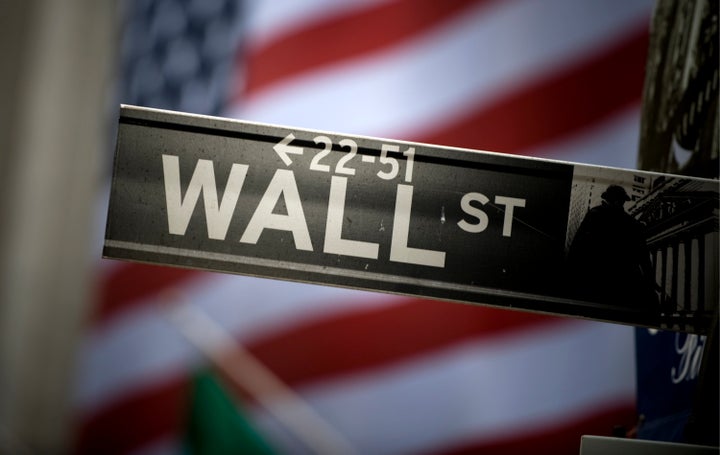
The financial system poses an even greater risk to taxpayers than before the crisis, according to analysts at Standard & Poor's. The next rescue could be about a trillion dollars costlier, the credit rating agency warned.
S&P put policymakers on notice, saying there's "at least a one-in-three" chance that the U.S. government may lose its coveted AAA credit rating. Various risks could lead the agency to downgrade the Treasury's credit worthiness, including policymakers' penchant for rescuing bankers and traders from their failures.
"The potential for further extraordinary official assistance to large players in the U.S. financial sector poses a negative risk to the government's credit rating,” S&P said in its Monday report.
But, the agency's analysts warned, "we believe the risks from the U.S. financial sector are higher than we considered them to be before 2008."
Because of the increased risk, S&P forecasts the potential initial cost to taxpayers of the next crisis cleanup to approach 34 percent of the nation's annual economic output, or gross domestic product. In 2007, the agency's analysts estimated it could cost 26 percent of GDP.
Last year, U.S. output neared $14.7 trillion, according to the Commerce Department. By S&P’s estimate, that means taxpayers could be hit with $5 trillion in costs in the event of another financial collapse.
Experts said that while the cost estimate seems unusually high, there's little dispute that when the next crisis hits, it will not be anticipated -- and it will likely hurt the economy more than the last financial crisis.
"The impact of the next crisis will be greater because the economy is in a much more fragile state," said Andrew Lo, professor of finance at the MIT Sloan School of Management.
"My worry about the next financial crisis is it will come from some corner we haven't really thought about, and we'll be locked into more constraints on the Fed's ability and on the Treasury's ability to really do anything," said Jeremy Stein, an economics professor at Harvard University who worked as an adviser to both the Treasury Department and the White House in 2009.
The constraints are a result of the last round of multiple bailouts.
"I think it's literally going to be politically harder to put in resources, for better or for worse," Stein said. That could either induce those in the financial system to take less risk, forestalling the next breakdown, or, "the mop up will be more difficult," Stein said.
The U.S. banking industry poses as much of a credit risk as Spain's, S&P wrote in an April 8 report in which it judged 92 nations' banking sectors. Spain is frequently mentioned as a candidate for an international bailout because many of its banks are under-capitalized, its banking system remains dogged by delinquent bubble-era loans and it faces losing investor confidence.
The ranking is partly based on the quality of a nation's financial regulation and lending patterns. U.S. bank regulators failed to prevent the crisis or the poor lending that led to it, S&P analysts wrote in a Jan. 6 report.
"Systemic risk is greater now," said Mark T. Williams, a finance professor at Boston University and a former bank examiner for the Federal Reserve. "It was uncorked because of the fall of Lehman Brothers, and the genie has been let out of the bottle," he said, referring to the September 2008 failure of the former investment bank.
The continued rise of globalization and the separate growth of derivatives -- financial instruments that aim to spread risk -- have led to greater connections between countries, industries and companies, Williams said. The level of so-called interconnection has tied firms to one another in ways experts do not completely understand. Regulators and policymakers didn't know how interconnected various banks and insurance companies were prior to the near-financial meltdown of 2008.
Because the giant insurer American International Group, better known as AIG, was connected to so many firms through derivatives, policymakers felt forced to bail the company out when it ran into trouble.
"Systemic risk knows no national boundaries," said Williams, who published "Uncontrolled Risk," a book on the topic, last year. "It is not random or a force of nature, it is man made. [And] the global financial market remains fragile due to weak policies, lax regulation, poor accountability and systems not designed to capture global risk management."
The risk of another financial collapse also has increased, Lo of MIT argues, because banks have not accounted for losses on poorly-performing assets they're still hiding on their books; lawmakers' likely aversion to another bailout should the system run into trouble again; and the perception that many national economies aren't as durable as they were just a few years ago. China, for example, was able to help the U.S. through the depths of the last crisis thanks to the steps it took to increase domestic spending.
But today, China is trying to cool down an over-heating economy.
"Next time around, if we see another systemic shock, it will be very difficult for us to depend on our foreign trading partners to cushion that kind of a blow," Lo said. "The world economy is not as resilient as it was just a few years ago."
